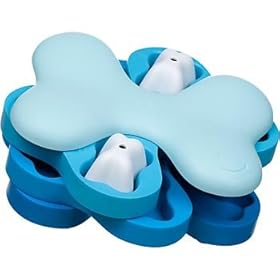
* Avoid keeping your pet in the yard. Fearful dogs will frantically try to dig, jump or climb their way out of the yard to escape the noise. Many dogs get lost and end up in the shelter this way. Every year shelters fill up with dogs that ran away from their yard.
*Make sure that your pet has proper ID in the event that he/she gets lost. Consider microchipping your dog because dog collars and ID Tags can break or fall off.
*Avoid the temptation to take your dog to fireworks shows or outdoors. A fearful dog could bolt and get lost. Fearful dogs can also feel trapped and may lunge or bite people or other dogs around them. Play it safe, keep them at home. I have read many stories about dogs who have fled or have been traumatized at fireworks shows.
*Keep your pets in a secure place for your pet stay in. This can be a crate or a quiet, pet-proofed room in your home that does not receive as much outside noise. Dogs can try to chew their way out of an area when scared so make sure it is a secure area. Close your windows and front door to shut out outside noises.
*What if you have a new dog or puppy and this is their first 4th of July? Play with your dog. During those hours when fireworks happen (usually 9 p.m. to midnight here in Los Angeles), play games with your dog. Play fetch or tug of war. Give your dog a toy to play with or work on a Nina Ottosson interactive puzzle with your dog. Click here for examples. Interacting with you will keep your dog's mind off the noises outside and on the games you are playing with your dog. Here is an example of my dog working on Tug-a-Jug under my supervision. She is so preoccupied with working on this toy that outside noises are unlikely to distract her:
*Consider playing music or keep the T.V. on as background noise. There is music that have been created specifically to calm dogs. Through a Dog's Ear is an example of music designed to keep dogs calm. You can purchase the CD on Amazon or play via Spotify
*Alternative remedies: For mild cases, some dogs respond well to flower essences and homeopathic remedies such as calming chews. Bach's Rescue Remedy for pets is one of the older brands out there and can be found in most natural pet stores. For homeopathic remedies you can consult with a homeopathic veterinarian for suggestions and dosage instructions.


*Body Wraps: many people have had success with body wraps which in effect "swaddle" your dog. I often use this product with fearful or anxious dogs. In her book, "Help for Your Fearful Dog," Nicole Wilde discusses a variety of methods of doing this and the proper way of introducing your dog to a wrap. In addition, there is a body vest marketed under the brand names, "Anxiety Wrap" and "Thundershirt" designed to achieve the same result. However, you should first acclimate your dog to the vest before a storm or fireworks so your dog does not react negatively to wearing the vest. Here is one of my dogs modeling a Thundershirt:

*Another calming product is Dog/Cat Appeasing Pheromone that can be sprayed on your pet's bedding or used as a room atomizer. There is also a collar version. It is usually sold in pet stores under the brand name "Comfort Zone" or "Adaptil."
*Alternative remedies: For mild cases, some dogs respond well to flower essences and homeopathic remedies such as calming chews. Bach's Rescue Remedy for pets is one of the older brands out there and can be found in most natural pet stores. For homeopathic remedies you can consult with a homeopathic veterinarian for suggestions and dosage instructions.


*Body Wraps: many people have had success with body wraps which in effect "swaddle" your dog. I often use this product with fearful or anxious dogs. In her book, "Help for Your Fearful Dog," Nicole Wilde discusses a variety of methods of doing this and the proper way of introducing your dog to a wrap. In addition, there is a body vest marketed under the brand names, "Anxiety Wrap" and "Thundershirt" designed to achieve the same result. However, you should first acclimate your dog to the vest before a storm or fireworks so your dog does not react negatively to wearing the vest. Here is one of my dogs modeling a Thundershirt:

*Another calming product is Dog/Cat Appeasing Pheromone that can be sprayed on your pet's bedding or used as a room atomizer. There is also a collar version. It is usually sold in pet stores under the brand name "Comfort Zone" or "Adaptil."
*For severe cases talk to your vet: for severe cases of anxiety or if your dog is at risk of injuring himself/herself, prescription medication may be necessary to keep your dog calm and safe. In such cases, it is best consult with your veterinarian well in advance of the holiday.
My old akita had mild to moderate anxiety to fireworks. I made sure that he was in a pet-proofed room with the T.V. on and the windows closed. Sometimes I distracted him with toys and games he liked to play. I also used a Thundershirt and distracted him with Nina Ottosson puzzles which seemed to help:
My old akita had mild to moderate anxiety to fireworks. I made sure that he was in a pet-proofed room with the T.V. on and the windows closed. Sometimes I distracted him with toys and games he liked to play. I also used a Thundershirt and distracted him with Nina Ottosson puzzles which seemed to help:
Recommended Reading:










.jpg)